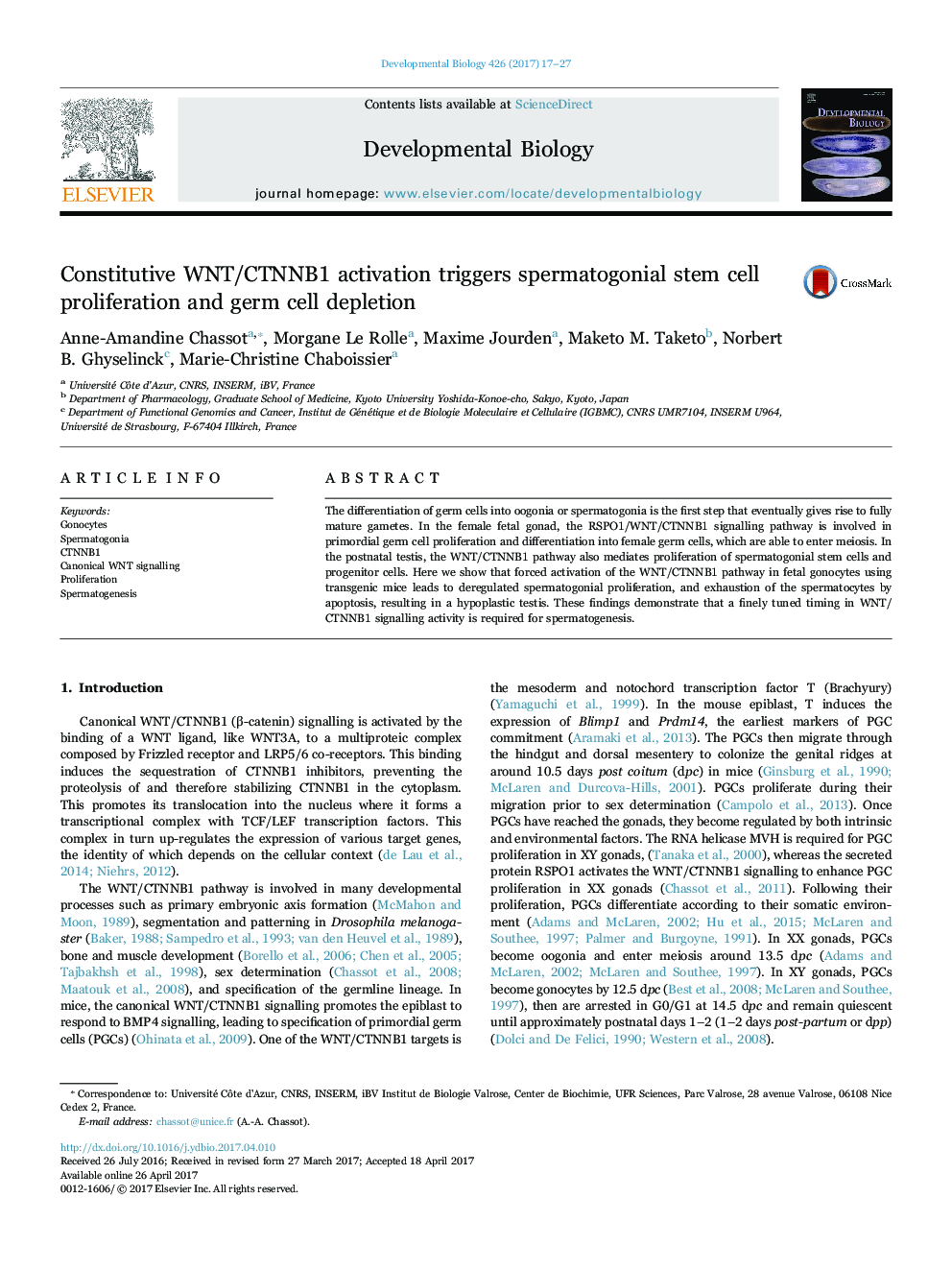| کد مقاله | کد نشریه | سال انتشار | مقاله انگلیسی | نسخه تمام متن |
|---|---|---|---|---|
| 5531709 | 1401809 | 2017 | 11 صفحه PDF | دانلود رایگان |

- Constitutive canonical WNT signalling in germ cells leads to a hypoplastic testis.
- Constitutive WNT signalling from the gonocyte stage onwards stimulates their proliferation.
- Forced WNT signalling in germ cells ultimately drives spermatocytes to apoptosis.
The differentiation of germ cells into oogonia or spermatogonia is the first step that eventually gives rise to fully mature gametes. In the female fetal gonad, the RSPO1/WNT/CTNNB1 signalling pathway is involved in primordial germ cell proliferation and differentiation into female germ cells, which are able to enter meiosis. In the postnatal testis, the WNT/CTNNB1 pathway also mediates proliferation of spermatogonial stem cells and progenitor cells. Here we show that forced activation of the WNT/CTNNB1 pathway in fetal gonocytes using transgenic mice leads to deregulated spermatogonial proliferation, and exhaustion of the spermatocytes by apoptosis, resulting in a hypoplastic testis. These findings demonstrate that a finely tuned timing in WNT/CTNNB1 signalling activity is required for spermatogenesis.
Journal: Developmental Biology - Volume 426, Issue 1, 1 June 2017, Pages 17-27